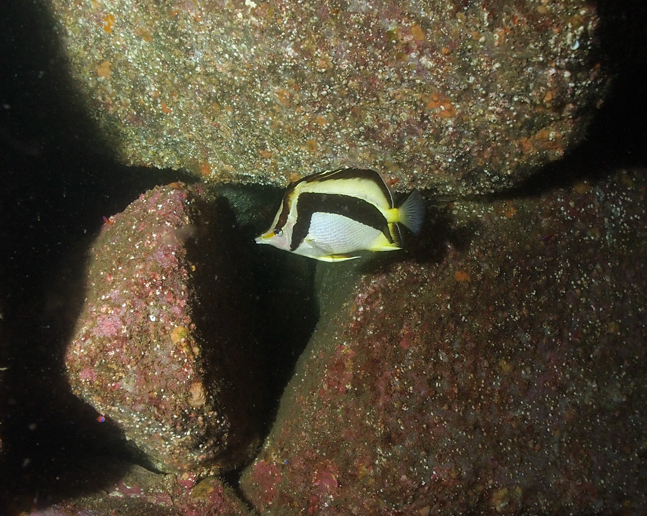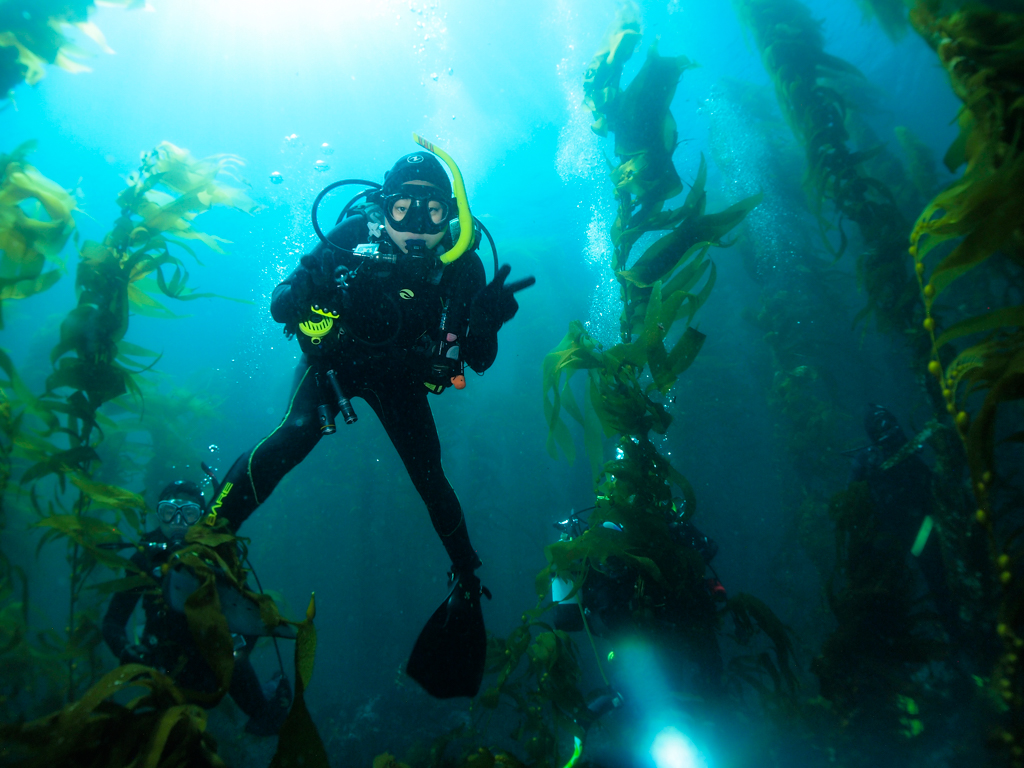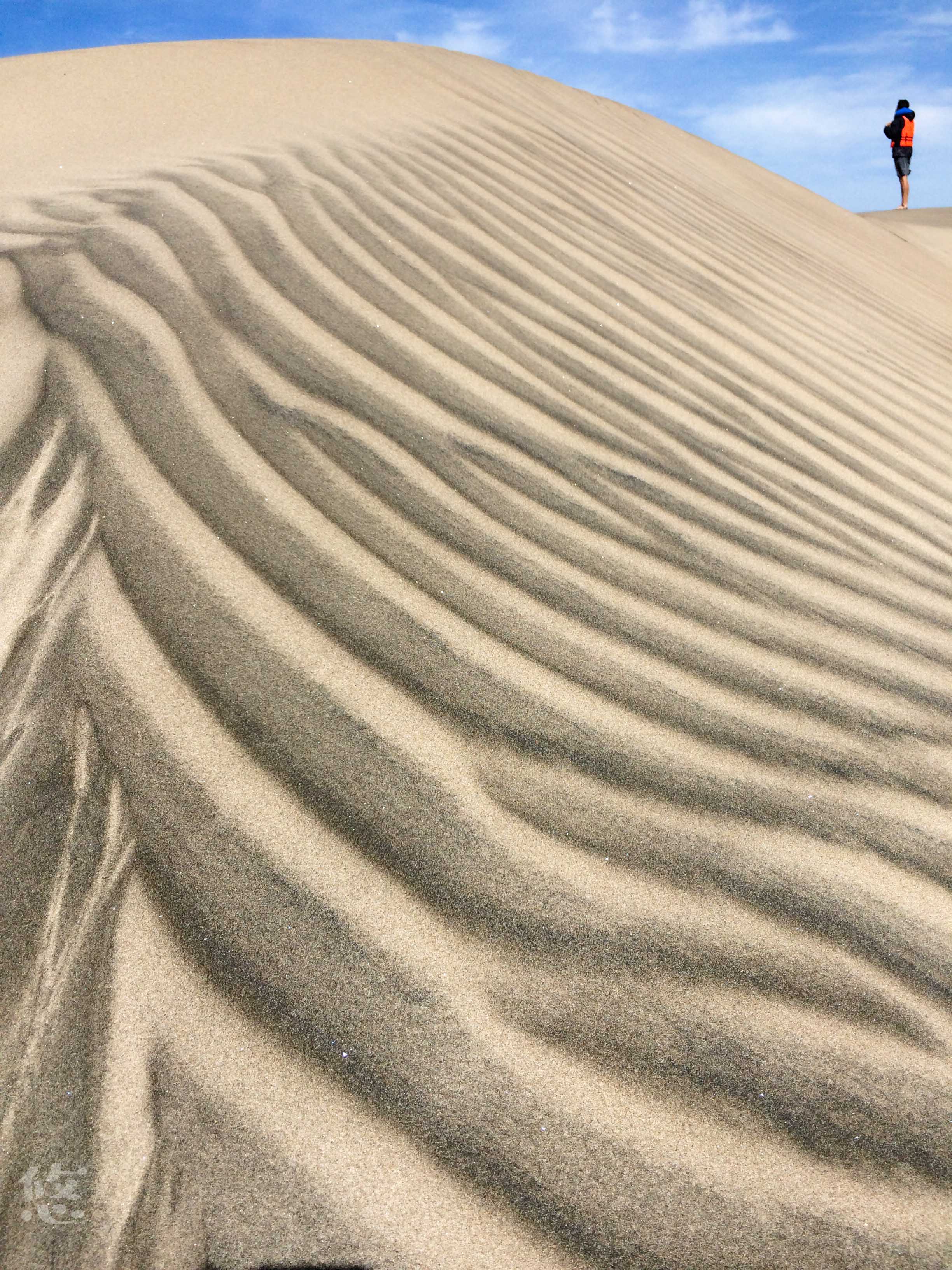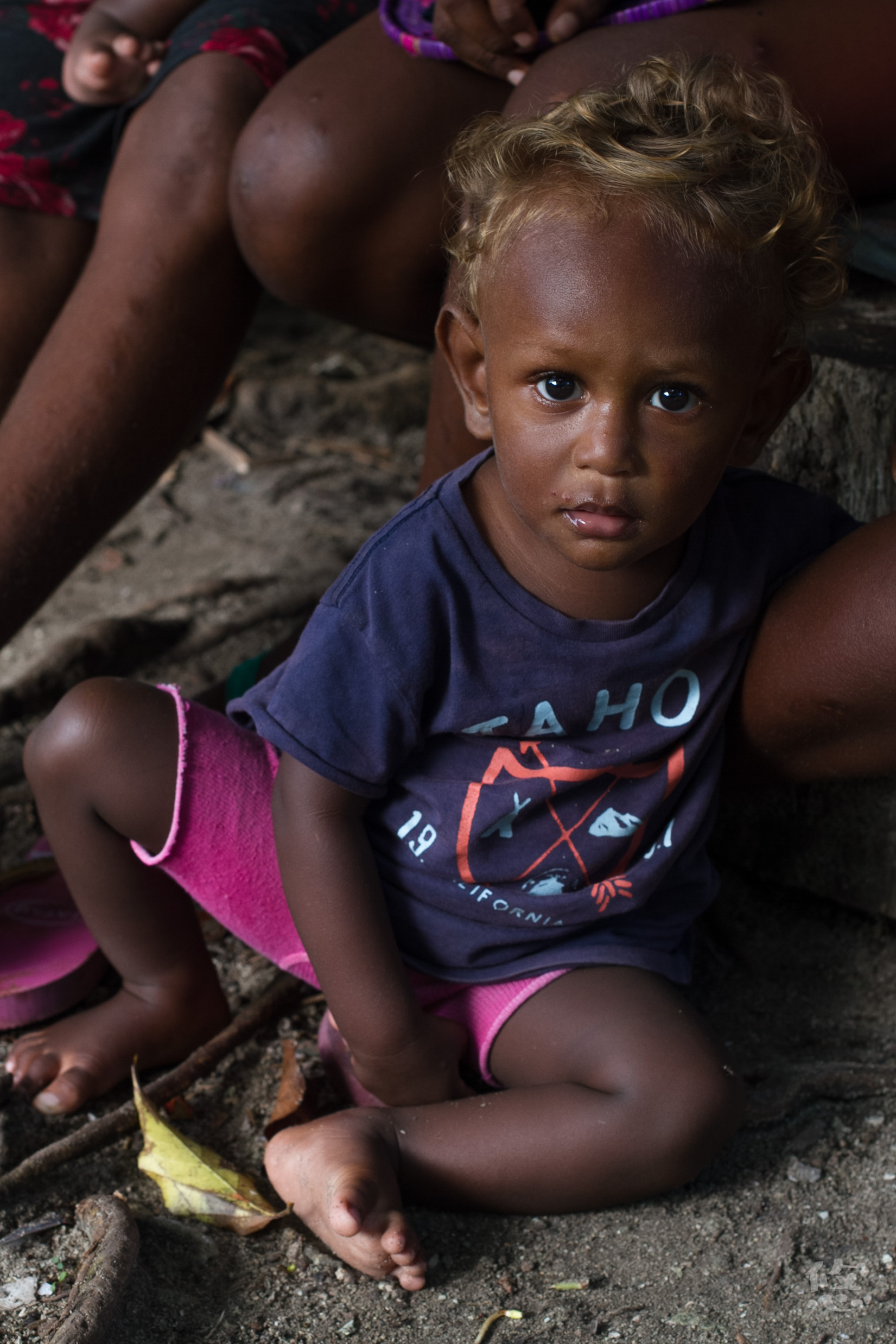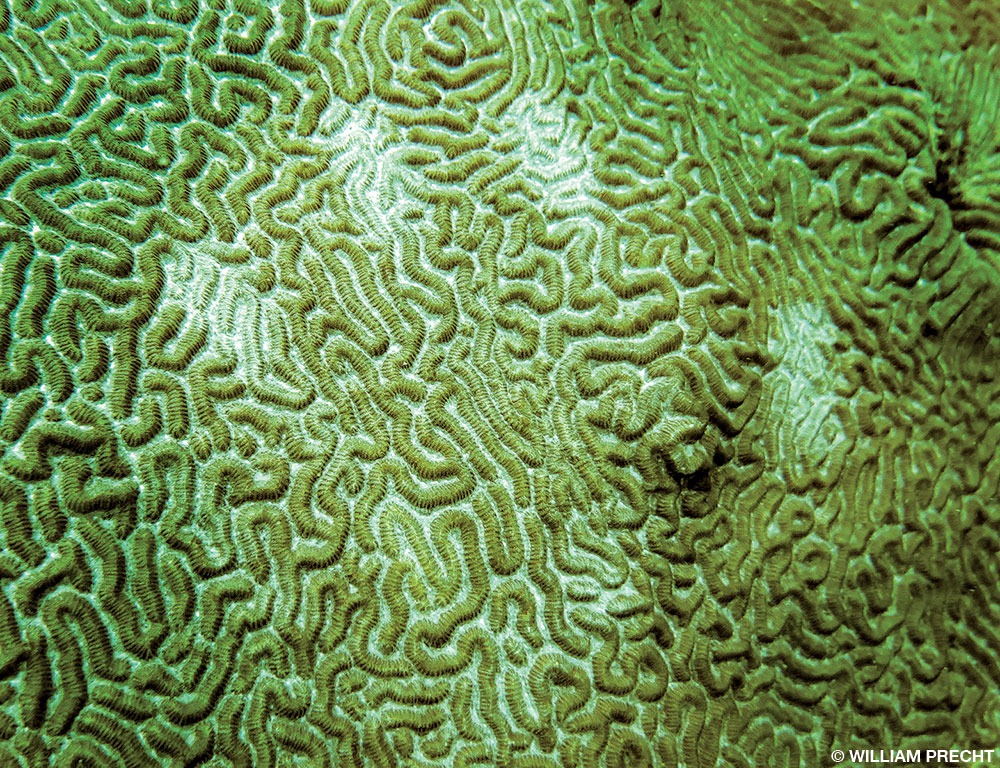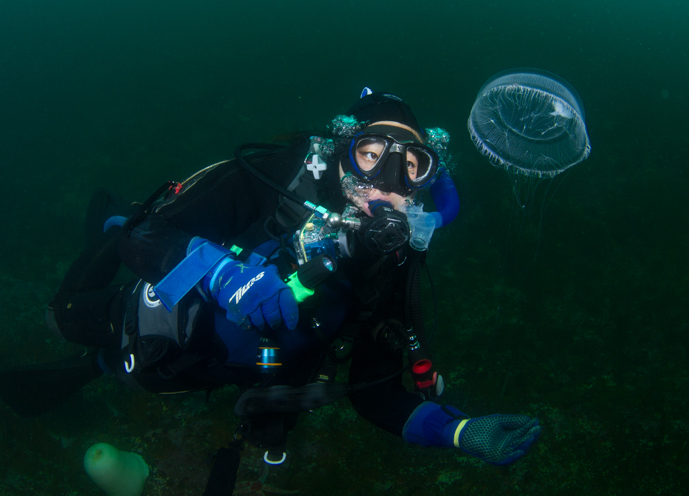
Haruka Ito
Occupation: Instructor / Staff Naturalist
Location: Somewhere in nature
Hometown: A forest under the sea
Nature is indescribably amazing. No matter how hard humans try to come out on top, nature's rules stay consistent within all living organisms. Even the spiraling pattern of our DNA is based on the same proportions that spiral sea shells and arrange the petals on a rose. No matter how hard we try to separate ourselves and try to "tame the wild", nature always wins. My passion is to show everyone this beauty and renew the wildness that's within all of us.
I'll guide you underwater and open your eyes to the creatures often overlooked. I'll give you health and beauty tips using algae, and make you delicious seaweed cocktails. I'll lead you into the mountains to forage for wild foods and make seasonal drinks! Come out and explore with me!
"From birth, man carries the weight of gravity on his shoulders. He is bolted to the earth. But man has only to sink beneath the surface and he is free" - Jaques Cousteau
Finding a Tropical Fish in the Cold Waters of California
August 8, 2019
While I cruised east through the thick kelp forest, I spotted it, the elusive scythe butterflyfish (Prognathodes falcifer). It looked like a small yellow confetti amongst the big boulders piled up at this dive site called the Rock Quarry on Catalina Island. The butterflyfish wagged its caudal fin as it scurried away in between the rocks. Looking behind me, I saw sunlight streaming through the kelp canopy onto my students as they swam towards me. I gestured to them to come over quickly and pointed my light into the crack where the black and yellow fish hid. It fluttered away between the rocks, but most in my group were still able to catch a glimpse of it.
The scythe butterflyfish is a subtropical fish, typically found from Baja California to the Revillagigedo Islands. Therefore divers who encounter them underwater are typically not surrounded by temperate kelp forests, but rather rocky reefs of the warmer Mexican waters. In the Channel Islands, divers will never see them, unless they are at one specific site on Catalina Island, where we were diving. The theory is that a few scythe butterflyfishes ventured north to Catalina during an El Niño year, a few decades ago. Since they can be found at deeper depths (to 800ft) in their home range where the waters are cooler (61-68°F), they were able to adapt to their new Catalina Island home, at shallower depths of around 40 feet (typically around 62-65°F). A family of scythe butterflyfish has since called this particular dive site home and seems to be thriving. On this particular day, I felt fortunate to see one of them and proud to show my students this rare sighting.
We've been having another El Niño year, and the waters were very warm on this particular day (72°F on the surface). Does this mean that the scythe butterflyfish can venture further north? Or will they situate themselves deeper where we will see them less often? If divers like us continue to stay curious about these special butterflyfishes that chose to stick around, we can continue to help monitor their presence and distribution as citizen scientists. With my group, I entered this sighting into the REEF.org database, where any diver or marine enthusiast can also submit sightings of fish and invertebrate species they encounter. These data will be used by researchers and scientists to study species of interest, aid in conservation efforts, and inform policymakers. Next time you’re out diving at the Rock Quarry, keep an eye out for the scythe butterflyfish family, and you can help keep track of their presence too!
Scythe Butterflyfish
5/11 Santa Barbara Island
May 21, 2019
We were all wondering if we would make it to Santa Barbara Island. Personally, it's my favorite Channel Island, and the last time I tried going out there, the seas were too unrelenting to get there. Santa Barbara Island is a tiny island in the open ocean, so there's very little protection around from wind, current, and swells. Unless the ocean conditions are willing, we won't be able to get there. The week before the trip, there were some rain storms, swells, and weather unlikely to be conducive to a nice day at the tiny island. I wasn't too sure we'd make it.
But guess what! We had an amazing day at SBI, and despite being May, when it's usually green cold water in California, the water was 58-62°F with great 40+ feet visibility! The seas were pretty calm too, but actually, this might be an illusion that the masterful Peace crew made us see. You see, the swells were there, as well as the current, wind and weather. But Captain Steven was able to plan our dive day so that we were diving the best conditions around the island running ahead of the weather, and left the island before the conditions became too unfavorable. Captain Steven and Chartermaster Thomas chose the three dive sites in the perfect order so that divers can enjoy the best Santa Barbara had to offer that day. You see, if we did the same dive sites in a different order that day, divers would've likely been all seasick, fighting strong current, or otherwise had a miserable time. This is why we love the Peace Dive Boat so much and respect their knowledge and experience in California waters.
Santa Barbara Island is full of diversity. There's probably a hundred different species of algae here that is one of the bases of the diverse marine life present. I saw more than a handful (6? 7?) different species of nudibranchs, even a rare black dorid and Limbaugh's dorid. There's lots of color -- pinks and purples of different species of coralline algae, orange cup corals, red and golden gorgonian sea fans, red, purple, pink, orange strawberry anemones, iridescent red algae (Fauchea laciniata), and bright blue/purple & orange Spanish Shawls speckled throughout the green towering kelp forest. There's still lots of healthy giant kelp at the sites we visited, while they're disappearing again from most of the Channel Islands (most likely due to the recent El Niño we've had/been having -- meaning higher water temperatures in the Pacific Ocean).
We had a diverse group of divers on our trip, from photographers to hunters to freedivers, and those who've been diving since the 1960s to those who jumped into their first ocean dive that day. We had a basic scuba diver class, an advanced class, a rescue class, and a master class. The beauty of Ocean Safari trips is that everyone from various dive experiences and backgrounds can come and thoroughly enjoy their dive day. Just because there are students doesn't mean that we go to baby beginner sites. Just because there are hunters doesn't mean that we won't go to a pristine Marine Protected Site. Each dive site will have something for everyone, and you'll see below that this was the theme of the trip.
Dive #1 Everyone loves Webster Point, there's so many cool directions to dive there -- depending on what you like to do on a dive. Wanna see an awesome wall?  What about the plateau on top of the wall?
What about the plateau on top of the wall?  Swim through kelp forests on the rocky reef?
Swim through kelp forests on the rocky reef?  Do you focus on macro photography? Wide angle? Spearfishing?
Do you focus on macro photography? Wide angle? Spearfishing?  This site has something for everyone. To top it off, sea lions were playing throughout the dive site.
This site has something for everyone. To top it off, sea lions were playing throughout the dive site.
Dive #2, we went to Sutil Island, at a site called the Notch on the east side. This spot also has areas for everyone to love exploring -- a vast area with kelp and rocky reef that's abundant with life, as well as the looming crevice with white water crashing into the notch for the experienced adventures.
Dive #3 was at Cat Canyon. This one featured a dramatic drop off at the end of the reef, a cool swim through if you know where to look, and a plateau bed of kelp with bowls of sand and reef if it's your first trip and want to feel more protected and safe. There were sea lions dive bombing all around the divers, and since this location is a Marine Protected Area, there were huge calico bass, giant male sheephead as long as my torso, and schools of blacksmith and señoritas. Everyone soaked in the awe-inspiring seascape with the clearest visibility of the day, and had a wonderful dive. You could tell because at the end of the dive, everyone was gathered by the boat blowing bubble rings, playing with sea lions, and taking photos of each other goofing around.
All in all, I'm pretty sure everyone had a great day at Santa Barbara Island. I'm glad I got to show my students around my favorite island. We even saw a finback whale and a pod of dolphins on our way home! I'm so grateful for the Peace crew, whose mastery of the California waters allowed us to have such an awesome day here. We even heard that a different dive boat "didn't dare" to go to Santa Barbara that day because dive conditions wouldn't be favorable. But the Peace crew showed us how it should be done!
Trip Report: Baja Big 3 Eco Expedition 2019
February 25, 2019
February 14 ~ 18, 2019
Expedition Members: Terry Cheraz, Jeff Cheraz, Mary Cheraz, Ruby Cheraz, Tanner Cheraz, Libing "Uncle Bing" Gu, Gabriel Lu, Soomin Seo, Haruka Ito.
I wanted to tell you how awesome this trip was, from the unique sights & views, intimate interactions with big marine life, and the amazing food!
On Valentine's Day, the Ocean Safari members on this expedition set out the bottom tip of Baja California Peninsula. We arrived in the tropical band of the Earth, then proceeded to drive North to La Paz, passing the Tropic of Cancer on the way up, leaving our short stay within the tropical zone. The drive up is beautiful, seeing the unique vegetation of the Cape Lowlands, driving around the towering Sierra de la Laguna mountain range, and seeing the vast views of the subtropical Pacific Ocean. Since I am the staff naturalist, I made the road trip like a scavenger hunt - pointing out the giant cacti, elephant trees, flowers, and greenery that we don't encounter back home. I also explained how the geography of the peninsula changes as we drove, and how these changes affect the climate of the region which further affects the types of vegetation that grows. There's a high spot along the way where we could see both the Sea of Cortez to the east and the Pacific Ocean to the west. That really shows how narrow the Baja California Peninsula really is! Because the peninsula is surrounded by the cold waters of the Pacific and the warm waters of the Gulf of California with a narrow strip of high elevation mountain ranges in the middle, Baja California is made up of very distinct and closely-packed biogeographical regions. All these aspects make for varying sights and drastic differences in vegetation types. If we flew directly to our destination, we would've missed all of these geographical changes and we wouldn't be able to appreciate Baja California's special features as much.
We spent a few nights in very authentic Mexican casitas. They had a rustic look and feel, but the inside features were also pretty fancy. It's a great mix of feeling like you're fully immersed in the culture, but having the luxury you'd expect in a fancy hotel. We ate at family-owned restaurants, interacted with the small town residents, and was able to take in the feeling of living amongst the locals. Here, we came to see "Big 3" Part One: gray whales. Went a few times to increase our chances of intimate interactions, and each time we had an amazing whale adventure. We saw hundreds of whales, some with such tiny newborn babies only a few weeks old. The mothers were teaching them how to dive, helping them come up to breath, and were some of the cutest giant babies I've ever seen in my life. We learned how to identify different life stages of whales, and what mating behaviors are like. There are also so many birds there since the bay is also a stopping ground for many migratory birds during the winter. Mexico is also one of the 100 or so countries that have vast mangrove forests, and this bay has one of the largest mangroves in Mexico. Mangrove ecology is also pretty interesting and unique, and we got to taste some freshly caught clams that live there! A couple of the days we had unusually high winds (locals said it was the strongest windstorm they've seen in 50 years), but that made our visit here feel even more exciting and adventurous!
In La Paz, we had a day to see "Big 3" Part 2 and 3. First, we swam with whale sharks in the bay. We spotted many, and we were able to jump in and swim with several of them. Each person had plenty of time to have personal encounters with these largest fish in the world. I was able to freedive down and swim alongside these gentle giants for what felt like minutes. Since they feed on plankton close to the surface, you can gaze into its eyes and really feel a connection and a sense of wonder at these giant sharks. For Part 3, we cruised over to a nearby island, to a sea lion rookery. We could get fairly close to the colony, and as soon as we got near, baby sea lions would surround us and check us out. They came face to face with us, and even touched us! I saw Gabe trying to circle around as quickly as these curious pups do, but they are much more agile than us! We ended this amazing day trip with lunch in a secluded, turquoise bay. Truly an adventurous day in paradise.
Lastly, I have to mention how delicious the food was. We had authentic Mexican food for every single meal. Since we stayed in fishing towns, we had fresh seafood meals often. These included giant fish tacos (some of the best I've ever tasted), seafood soup, locally caught fish, fresh clams, and an enormous "half-order" plate of lobster tail, fried shrimp, and fish filet. We were never left hungry, and everyone always finished their large portions because the food was too good to stop eating! On our boat trip, we had amazing tamales for lunch "on-the-go". On the very last day, we had a taco and soup farewell party. The trip director's mom made us Michoacán style menudo & frijoles charros, and the staff grilled us carne asada, tripa, sausages, and steak. Yummy way to end our expedition.
We had an amazing time, and though this wasn't like a typical dive trip, this expedition truly fit into Ocean Safari's motto: "Where Real Adventure Begins." Join us next year in March!
Solomon Islands Expedition Portraits 2018
February 25, 2019
OSDT Alaska Trip 2013
May 10, 2018
People often ask where my favorite dive destination is.
Well... It's hard to pick, there's so many great places and they're all unique and amazing for their own reasons. You may go to a specific destination once and it might be just okay, but you might go again and its spectacular! Conditions and situations are different, my expectations and reality can also be mismatched. So I can't say a specific place is the best.
But I do have a trip that is one of my top diving experiences ever. That trip was diving in Alaska in September 2013.
Here's a video taken by a member of our trip, Alex Benedik. It was one of the most jawdropping and amazing experiences of my life.
Alaska Underwaterworld 2013 from Global Dive Media on Vimeo.
Say No to Toxic Sunscreens
May 10, 2018
There's five common ingredients in most commercial sunscreen:
- Avobenzone, Homosalate, Octisalate, Octocrylene, Oxybenzone.
Every single one of these ingredients are harmful for our heath and/or ecological toxins.
One of these ingredients, Oxybenzone, is in almost every single sunscreen, even some of the ones labeled "reef safe." Oxybenzone gets absorbed into our skin, and its purpose is to absorb UV rays. However, it also bioaccumulates in our bodies, disrupts our endocrine/hormone functions, and can be passed off into breastmilk. This chemical is one of the top causes of coral bleaching -- it destroys the DNA of coral larvae and mature coral organisms (zooxanthellae). Fish exposed to chemical sunscreen become sluggish, and have altered swimming and feeding behavior.
Divers Alert Network has written up a good article that talks more about the impact of sunscreen on our reef health. Like most articles, it talks mainly about coral, and we don't have much coral here in CA. BUT, all our oceans are connected - sunscreen use here affects the coral reefs in the tropics. PLUS, these toxins aren't just harming coral. It's harming you, your children, marine mammals, and other marine life.
DAN's Article about Sunscreen and Marine Life
So what do we do instead? Ocean Safari carries Stream2Sea sunblock, the only sunblock on the market that is proven and tested to be safe for you, corals, marine life, and the environment. Find out more about it here
This isn't my picture. But notice the handprint of bleached coral? This diver likely had applied sunblock with oxybenzone with his hands and touched the coral. Rule #1, use coral safe sunscreen. Rule #2, please don't touch the coral even if you didn't apply sunscreen.


